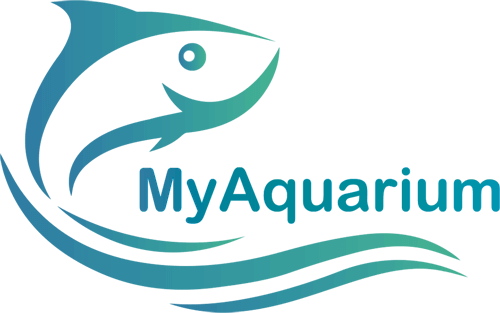The Pumpkinseed Sunfish (Lepomis gibbosus) is one of the most beautiful cold-water species to breed in very large lakes or fish tanks.
These animals are native to North America, inhabiting regions ranging from New Brunswick in Canada to the state of South Carolina State in the United States. Like other members of the Centrarchidae family, the Pumpkinseed Sunfish inhabits cold waters and usually stays at depths ranging between 1 and 2 meters in areas with a lot of vegetation.
The species is quite stocky and long laterally. Its lateral colors vary from yellow to olive green with several copper or gold spots. In addition, the fish also has dark lateral vertical stripes.
Generally speaking, the Pumpkinseed Sunfish isn’t recommended for tanks as it’s seen most often in large ponds. However, if you come across a fish to sale, make sure it can be created in your region. The species is considered invasive!
Technical Details
Name: Pumpkinseed Sunfish;
Scientific Name: Lepomis gibbosus (Linnaeus, 1758);
Family: Centrarchidae;
Species Origin: North America (New Brunswick in Canada to South Carolina in the United States);
Length: Up to 15 inches;
Life Span: 12 years;
Care Level: Moderate;
Water Parameters
pH: Maintain the pH of the water between 7.0 – 7.5;
Water Hardness: Between 10 – 15;
Temperature: Must be kept between 4 – 22°C;
Care
Food
Omnivorous. The Pumpkinseed usually looks for food in daylight and is most active during the afternoon. It feeds on insects, mosquito larvae, small crayfish, molluscs and worms.
In addition, this species can feed on the eggs of other fish and fry. From time to time, they may also nibble on tank plants, but this usually doesn’t cause too many problems as they prefer protein foods.
In a pond, you can feed it small live or frozen worms and larvae. They also get used to flake or pellet food, but be aware of the size of pellet food as they have very small mouths.
Temperament / Behavior
As we mentioned before, the Pumpkinseed Sunfish is a fish that is usually more active during the day. Most of the time, you will find these fish swimming in small groups of 2-4 fish. At night, they tend to rest among plants, rocks or at the bottom of the pond.
Tank Mates
If you are considering keeping these fish in a community tanks, I recommend that you dont add them with other species that are smaller than them. Make sure your mates are robust and larger fish, but not overly aggressive.
See Also:
Breeding / Mating
The mating season for these fish is usually from May to June, when the water temperature in the North America regions rises to 16°C (Celsius). During this period, males are brightly colored and their bellies more orange. The females are also more colorful, but not as much as the males.
Then the males will begin to build a nest in the substrate in the shallowest part of the pond. Therefore, it’s essential that you have an area in the pond that is between 15 and 50 centimeters deep, some plants and that this area receives some sunlight. These nests are usually about 30 centimeters in diameter.
The fish eggs hatch in 3 days at a temperature of 28°C. After hatching, the fry stay in the nest for about 5 days, obtaining their nutrients through their yolk sacs.
The fry stay close to the nest and the father watches them for the first 11 days. When they start to stray too far from the breeding area, the parent picks up the fry in his mouth and returns them to the nest. During this period, the males are very protective and aggressive, and will attack any intruders that come close to the fry.
See Also:
During the first year, the fry will grow up to 5 centimeters in length. After two years, they will be fully grown and able to reproduce. One thing you need to be careful about is avoiding overpopulation. One way to avoid this is to keep the Pumpkinseed Sunfish with other species, as they will eat their fry. It may seem a little cruel, but it’s nature at work!
Fish Tank Size
Generally speaking, the Pumpkinseed Sunfish are an easy fish to care, but you will be able to raise them best in a small pond of about 390 gallons. In addition, they will need clean water and may suffer if there is too much sludge on the bottom. Therefore, a good filtration system is critical to keeping them healthy.
Like most fish of the species, they will prefer well-oxygenated water, but it can still live with lower levels of oxygen. Also, they are used to the cold water. So, they will live much better in environments where the water temperature does not exceed 20 – 23°C.
In winter, this fish is located in deeper areas of the ponds, so make sure the bottom region is big enough for all of them. Other than that, adding some plants and rocks in these deeper regions will provide shelter and allow them to hide and feel safer.
Finally, if you still want to keep them in fish tanks, make sure it has at least 73 gallons for a single fish.
References
Page, L.M. and B.M. Burr, 2011. A field guide to freshwater fishes of North America north of Mexico. Boston : Houghton Mifflin Harcourt, 663p. (Ref. 86798)
Fuller, P. 2004. “USGS Nonindigenous Aquatic Species Database” (On-line). Accessed October 26, 2005 at http://nas.er.usgs.gov/queries/FactSheet.asp?speciesID=382.
Paulson, N., J. Hatch. 2002. “Fishes of Minnesota” (On-line). Accessed October 26, 2005 at http://www.gen.umn.edu/research/fish/fishes/pumpkinseed.html.




